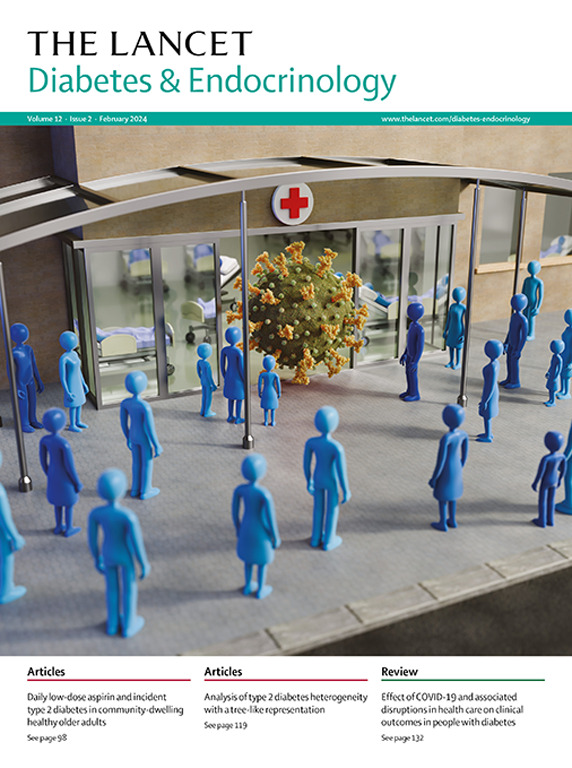Optimization of Mn-Zn Ferrite Doping in Phosphate-Based Glass Ceramics for Enhanced Hyperthermia Efficiency and Bioactivity
IF 44
1区 医学
Q1 ENDOCRINOLOGY & METABOLISM
引用次数: 0
Abstract
This study investigates the effects of Mn-Zn ferrite (MZF) content and heat treatment temperature on the structural, mechanical, magnetic, and bioactive properties of Na2O-CaO-P2O5 glass ceramics. Various MZF contents (5MZF, 10MZF, 20MZF, and 40MZF) were incorporated into the glass ceramics and subjected to heat treatment at different temperatures (600, 650, 700, and 800°C). The results demonstrated that increasing the MZF content significantly enhanced the mechanical properties, including Vickers hardness, Knoop hardness, and Young's modulus. For example, the Vickers hardness values increased from 5.6 GPa in 5MZF samples to 7.1 GPa in 40MZF samples. X-ray diffraction analysis revealed the presence of major crystalline phases, such as Ca2P2O7 and Na4Ca(PO3)6, with NaFe3P3O12 and (Zn,Mn)Fe2O4 appearing in samples with higher MZF content. Magnetic measurements indicated that the 40MZF samples treated at 700°C reached a satisfactory hyperthermia temperature of 43°C within 16 min. Bioactivity tests showed a decrease in bioactivity with increasing MZF content, whereas cytotoxicity assays confirmed that all MZF-Na2O-CaO-P2O5 bioactive glass ceramics were non-toxic, maintaining over 100% cell viability after 24 h. These findings suggest that MZF-containing glass ceramics have potential applications in the biomedical field, particularly when enhanced mechanical and magnetic properties are required.优化磷酸盐玻璃陶瓷中的锰锌铁氧体掺杂,提高热疗效率和生物活性
本研究探讨了锰锌铁氧体(MZF)含量和热处理温度对 Na2O-CaO-P2O5 玻璃陶瓷的结构、机械、磁性和生物活性特性的影响。在玻璃陶瓷中加入不同含量的 MZF(5MZF、10MZF、20MZF 和 40MZF),并在不同温度(600、650、700 和 800°C)下进行热处理。结果表明,增加 MZF 含量可显著提高机械性能,包括维氏硬度、努氏硬度和杨氏模量。例如,维氏硬度值从 5MZF 样品的 5.6 GPa 增加到 40MZF 样品的 7.1 GPa。X 射线衍射分析显示了主要结晶相的存在,如 Ca2P2O7 和 Na4Ca(PO3)6,而 NaFe3P3O12 和 (Zn,Mn)Fe2O4 则出现在 MZF 含量较高的样品中。磁性测量结果表明,在 700°C 温度下处理的 40MZF 样品在 16 分钟内达到了令人满意的 43°C 高热温度。生物活性测试表明,生物活性随着 MZF 含量的增加而降低,而细胞毒性测试则证实,所有 MZF-Na2O-CaO-P2O5 生物活性玻璃陶瓷都是无毒的,24 小时后细胞存活率保持在 100%以上。
本文章由计算机程序翻译,如有差异,请以英文原文为准。
求助全文
约1分钟内获得全文
求助全文
来源期刊

The Lancet Diabetes & Endocrinology
ENDOCRINOLOGY & METABOLISM-
CiteScore
61.50
自引率
1.60%
发文量
371
期刊介绍:
The Lancet Diabetes & Endocrinology, an independent journal with a global perspective and strong clinical focus, features original clinical research, expert reviews, news, and opinion pieces in each monthly issue. Covering topics like diabetes, obesity, nutrition, and more, the journal provides insights into clinical advances and practice-changing research worldwide. It welcomes original research advocating change or shedding light on clinical practice, as well as informative reviews on related topics, especially those with global health importance and relevance to low-income and middle-income countries. The journal publishes various content types, including Articles, Reviews, Comments, Correspondence, Health Policy, and Personal Views, along with Series and Commissions aiming to drive positive change in clinical practice and health policy in diabetes and endocrinology.
 求助内容:
求助内容: 应助结果提醒方式:
应助结果提醒方式:


